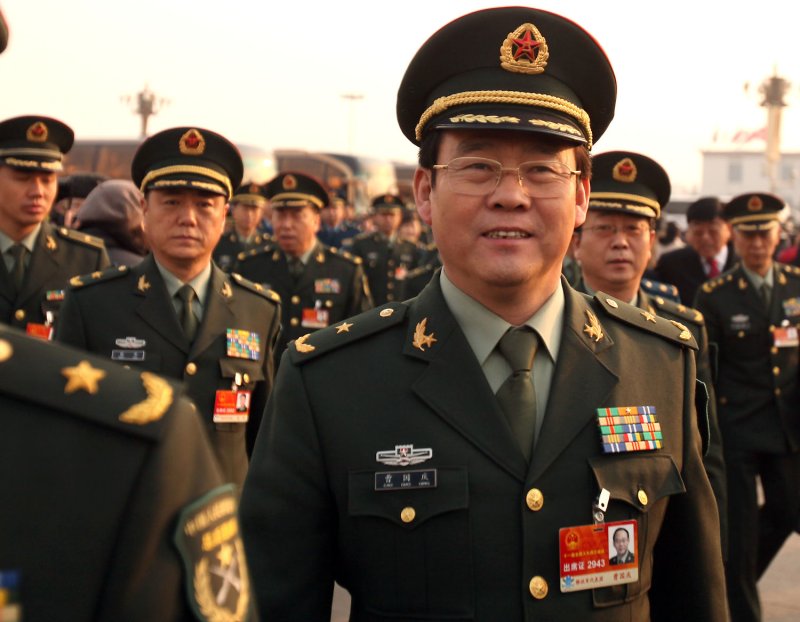Chinese military delegates arrive for the opening session of the annual National People's Congress (NPC) being held in the Great Hall of the People in Beijing March 5, 2011. China's spending on police and domestic survelliance will hit new heights in 2005, with "public security" outlays unveiled on Saturday outstripping the defense budget for the first time as Beijing cracks down on protest calls. UPI/Stephen Shaver |
License Photo
NEW DELHI, March 21 (UPI) -- The Indian Defense Ministry's Annual Report for 2010-11 has added Chinese military capabilities into its strategic planning.
In the Defense Ministry's report, China's increasing capabilities have come under increased scrutiny from New Delhi.
The report notes, "India is conscious and watchful of the implication of China's evolving military profile in the immediate and extended neighborhood," the News International reported Monday.
The signals in the report are mixed -- even as the Indian Defense Ministry's Annual Report for 2010-11 notes that Indian-Chinese relations are of "crucial importance" and the Indian government's policy is to interact with China based on principles of "mutual trust and respect and sensitivity for each other."
The report nevertheless makes it clear that China's military buildup, which parallels India's is a source of potential concern for New Delhi in the future.
While India regards Pakistan as its primary adversary, particularly over the unresolved issue of Jammu and Kashmir, which, despite a Muslim majority, remains dominated by India, China's increasing military prowess has focused the attention of the Indian military establishment as a potential threat.
The strategic shift to broaden India's strategic interests represents a historic shift from Pakistan, with whom India engaged in conflict in 1947, 1965 and in 1971, which led to the establishment of Bangladesh, and Indo-Pakistani confrontation in 1999, as also known as the "Kargil" war" over control in Jammu and Kashmir.
China, a rising competitor, also fought a brief conflict with India in 1962 over a disputed northeastern Himalayan border region. Since that time, Indian army units have largely focused on units capable of undertaking operations in plains rather than the high-altitude mountainous terrain necessary to defend country's borders with China.
India's rapidly increasing military budget has enabled to country to strengthen its alpine mountain divisions as well as allow it to search on the international market for specialized weapon systems that can assist the nation in increasing its operational capabilities in possible mountainous operations against China.
Broadening its military capabilities India has established two mountain divisions with 25,000-30,000 troops to deploy along its contested Chinese frontier in Arunachal Pradesh while moving Indian air force squadrons closer to the border.
The air force has redeployed two squadrons of Su-30 MKI fighters at Tezpur in Assam, 100 miles south of its Himalayan border with China while upgrading airfields and advance landing grounds, including the strategically located ALG at Daulat Beg Oldi and in Chushul near the Karakoram Highway.





